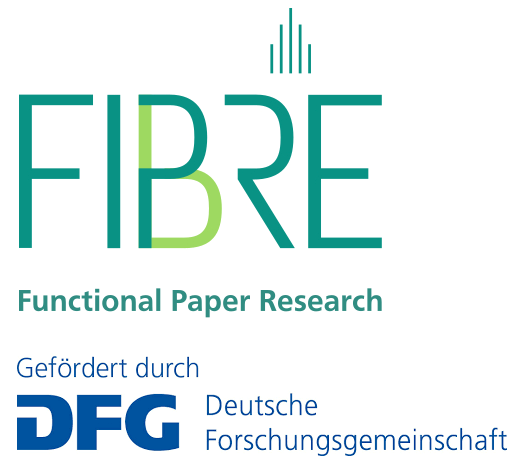Thermal and Photochemical Crosslinking of Paper Fibers for Generation of Paper Substrates Providing a High Wet Strength and Multiple Chemical Functions
For the use of functional papers in aqueous environments (e.g. for bio-analytical testing or similar), a sufficiently high wet strength of the paper sheet is crucial. To increase wet strength, so-called wet strength agents, often cationic polymers, are added during paper making. Wet strength agents bind chemically to the fiber surfaces and strengthen the fiber-fiber contacts in the presence of water. However, the use of such polymers is generally problematic for bioanalytical applications because they exhibit a strong interaction with all charged analytes such as proteins. This is just one of several reasons why frequently difficulties are encountered concerning the reproducibility of lab-on-paper applications.
The aim of the proposed research project is to develop and fundamentally understand novel functionalized papers, with respect to wet strength properties. For this purpose, paper fibers will be modified with functional polymers which carry groups that can undergo crosslinking after thermal or photochemical activation, respectively. These groups form reactive intermediates (e.g., carbenes) during activation and to further crosslink the polymers through C,H insertion reactions. Such functional polymers will not only link to each other, thereby forming polymer networks, but they will also covalently link to the cellulose fibers of the paper substrate. Such functional polymers will not only link to each other, thereby forming polymer networks, but also they will covalently link to the cellulose fibers of the paper substrate. If such fiber surface-bound networks are located at junctions between two fibers, bond-strength between fibers can be enhanced. Through an appropriate choice of the chemical structure of the polymers, the hydrophilicity/hydrophobicity of the paper can be adjusted and at the same time (further) functional groups may be introduced into the paper, which can then be used in follow-up studies for more application-driven research of such (multi)functional paper.
To prepare polymers suited for C,H-insertions, in particular, diazocarbonyl and diazocarboxylic compounds, as well as benzophenone and benzophenone analogs with broader π-systems (e.g., anthraquinone derivatives or thioxanthones) of different chemical structure, will be synthesized, polymerized and used in crosslinking reactions. The deposition and drying behavior of the polymer solutions within the paper will be studied and the crosslinking and fiber attachment behavior of the polymers will be investigated. The influence of the wetting of the fiber surfaces with the polymer solutions and the “cuff formation” of the liquid at fiber crossing points will be investigated. The effect of different novel wet strength agents (chemical structure, molecular weight, crosslinker content) as well as paper intrinsic parameters (fiber origin, beating, chemical pretreatment, if necessary) on the properties of the paper thus treated (e.g., dry and wet strength) shall be analyzed. Finally, we aim for the study and understanding of the failure-mechanism of paper at tensile break by videography with fluorescently labeled fibers to generate a fundamental understanding of the underlying processes in wet-strengthened papers.
Because the latter requires both, expertise in paper chemistry as well as expertise in functional, cross-linkable polymers at surfaces, the working group of CPI (Rühe, Freiburg) and MAP (Biesalski, Darmstadt) are carrying out this project in close collaboration.





